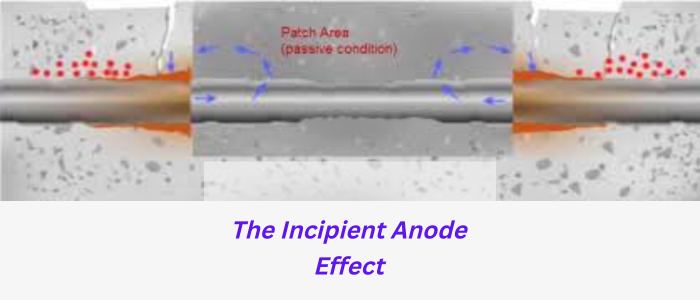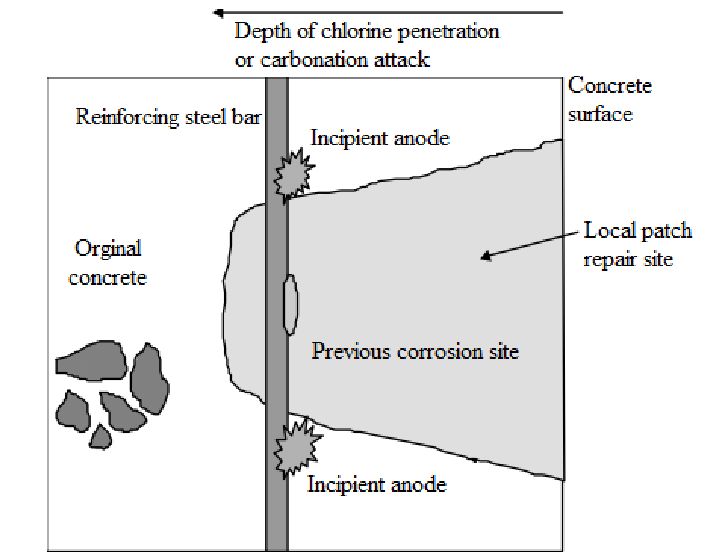The Incipient Anode Effect
When an area of steel is corroding under the influence of chloride contamination, steel is dissolving causing the formation of iron ‘ions’, tiny charged particles of iron.
Simultaneously, electrons are released which flow along the bar and react at some point remote from the corrosion with both air and oxygen.
Cathodic protection, which is discussed here, involves providing a small electric current to the steel which prevents further corrosion. The corroding areas are supplying electrons to surrounding areas of steel effectively providing localized cathodic protection to the adjacent steel.
If the corroding area is now broken out and a patch repair applied, without dealing with chloride contamination in adjacent areas, the cathodic protection system has been removed!
New corrosion cells will rapidly spring up on either side of the repair and early failure will often ensue.
One manufacturer uses small sacrificial anodes, tied to the steel to minimize this problem, but this will only work while zinc remains, which must be gradually being sacrificed to protect the surrounding steel.
It also relies on the field of activity being sufficiently wide to inhibit the adjacent cells. This of course brings economics into play as it may be uneconomical if the areas are large to cut out all of the contamination or to use large numbers of sacrificial anodes.
In this case, desalination or cathodic protection may be viable alternatives. These repair recommendations are only a guide and apply only to conventionally reinforced structures.
Repair of pre-stressed or post-tensioned structures with tendon damage is a specialist task and beyond the scope of this article.
Read Also:

